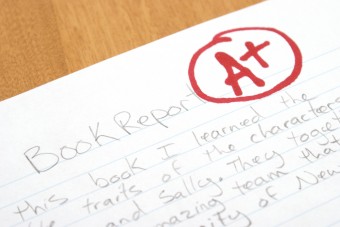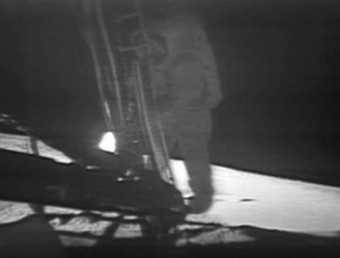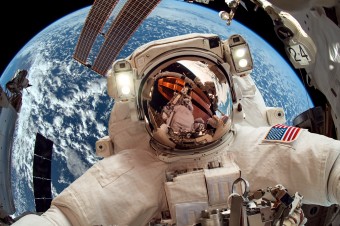
Without the use of their hands, astronauts have to rely on other means to scratch various itches. For any itch outside of the face, retired astronaut Clayton Anderson explained, “You shake, rattle and roll, baby! That’s the only thing really that you can do to alleviate that itch. Hopefully, between the incredibly bulky and stiff suit itself and the liquid cooling garment you are wearing beneath the suit, you can wiggle your body enough to effectively scratch that itch!”
Itches on the face can be a bit more tricky, but there are things within reach. For instance, under the helmet astronauts wear what is sometimes referred to as a Snoopy Cap that is equipped with earphones and a microphone. If an itch presents itself on the lower half of the face, the microphone is one commonly used scratching post. The downfall of this method is that the action sometimes moves the microphone out of position, interfering a little with the sound quality in communications.
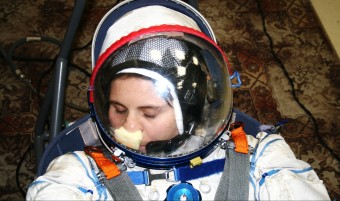 Another
option astronauts use is the valsalva device, which is a foam piece
attached to the bottom interior of the spacesuit helmet. The purpose of
the valsalva device is to allow an astronaut to block up their nostrils
and blow to equalize pressure in the ears when necessary. Beyond its
intended purpose, the foam block is a handy device for scratching an
itch.
Another
option astronauts use is the valsalva device, which is a foam piece
attached to the bottom interior of the spacesuit helmet. The purpose of
the valsalva device is to allow an astronaut to block up their nostrils
and blow to equalize pressure in the ears when necessary. Beyond its
intended purpose, the foam block is a handy device for scratching an
itch.Of course, you could potentially get a little snot rubbed on the itchy spot if you’ve previously used the humps on the valsalva to stopper your nose, but desperate times and all that…
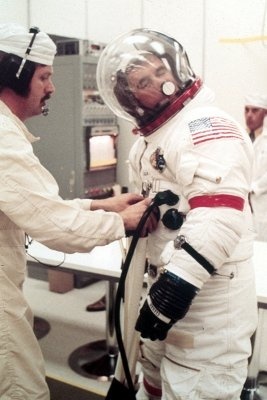 A
third option to address facial itches is a strategically placed piece
of Velcro. This was particularly used during the Apollo missions. (And, note, contrary to popular belief, Velcro was not invented by NASA, nor specifically for use in the space program.)
The astronauts would typically place the Velcro on the little feed port
flap that is held closed via the pressure in the suit when out in
space. Apollo 17 astronaut Harrison Schmitt noted, “Everybody seemed to
agree that you needed that [Velcro]…”
A
third option to address facial itches is a strategically placed piece
of Velcro. This was particularly used during the Apollo missions. (And, note, contrary to popular belief, Velcro was not invented by NASA, nor specifically for use in the space program.)
The astronauts would typically place the Velcro on the little feed port
flap that is held closed via the pressure in the suit when out in
space. Apollo 17 astronaut Harrison Schmitt noted, “Everybody seemed to
agree that you needed that [Velcro]…”If an itch pops up where nothing sufficiently abrasive can be rubbed against it, the astronaut simply has to endure, generally using the distraction tactic until the itch fades. This is easier than in some other settings. A typical spacewalk lasts between five and eight hours and being out there working is incredibly laborious due to how stiff the space suit gets when in the near vacuum of space (even just flexing your fingers to grip things is relatively difficult). Between the straining and extreme focus needed to complete some of the tasks the astronauts are out there for, not to mention the absolutely beautiful view and the knowledge that there is very little between you and the near vacuum of space, there’s plenty to get caught up in and forget all about the itch.
If you liked this article, you might also enjoy:
Bonus Facts:
- Beyond having to deal with itches that are sometimes impossible to scratch, astronauts out space walking also have to potentially deal with having to go to the bathroom. The solution here is simple- essentially, an adult diaper specially designed for maximum absorption. Now just think that those space suits are re-used by other astronauts… One can imagine space walking flatulence also isn’t terribly pleasant. (And if you’re curious, see: Why Other People’s Farts Smell Worse).
- The term “astronaut” is derived from the Greek words astron, meaning “star,” and nautes, meaning “sailor” -so, essentially “star sailor”.
- In the free-fall state astronauts orbiting the Earth find themselves in, sweat and tears do not flow downward and instead cling to surfaces and blob together. This can become a major vision problem when sweat and tears form bubbles in the eyes or on eye lashes.
- Even worse is a potential coolant water leak during a space walk. This happened to astronaut Luca Parmitano, resulting in his space walk abruptly terminated as his helmet began to fill up with a giant glob of water. Towards the end as he was waiting for the pressure to equalize on the hatch, with the water in the helmet continuing to increase, he was beginning to have trouble seeing, hearing, and even talking. The bigger concern, of course, was that he might accidentally suck up some of the glob of water as he was trying to breathe around it. This would have resulted in him coughing uncontrollable, only making the situation worse and potentially causing him to drown in the suit. As Flight Director David Korth said of the event, “You can imagine, you’re in a fishbowl… That’s not anything you take lightly.” It was later discovered that one of the suit’s coolant line filters got clogged, causing water to leak out and into his helmet. In total, the coolant system contains a little over a gallon of water and is essential to keep the astronaut from overheating in the suit.
- Before an astronaut ventures into space, the interior of the face shield is treated with an anti-fogging chemical to ensure body heat and sweat don’t fog it up. However, in 2011 astronaut Andrew Feustel went out on a spacewalk and ended up getting a droplet of the anti-fogger solution in his eye. The substance caused major irritation and his eye started to burn and tear up. Without the ability to use his hands, he was forced to use the valsalva device to try and reduce the stinging and get the tears to stop clinging to his eye so he could see from it again.
- Sneezing in space also presents problems and astronauts learn how to sneeze in the suits during training. Astronaut Dave Wold states that the trick is to have good aim– “Aim low, off the windshield, because it can mess up your view and there’s no way to clear it…”

